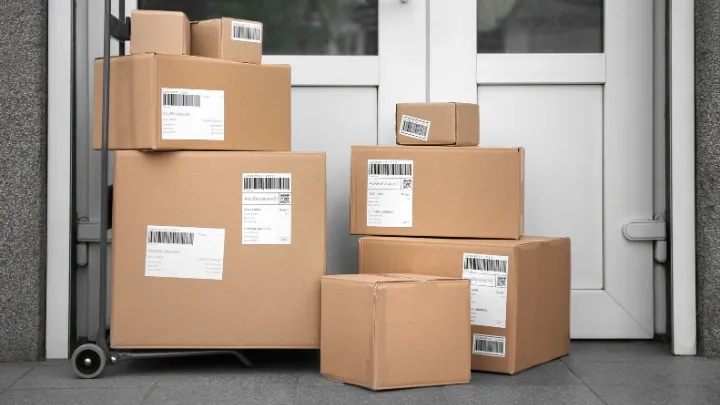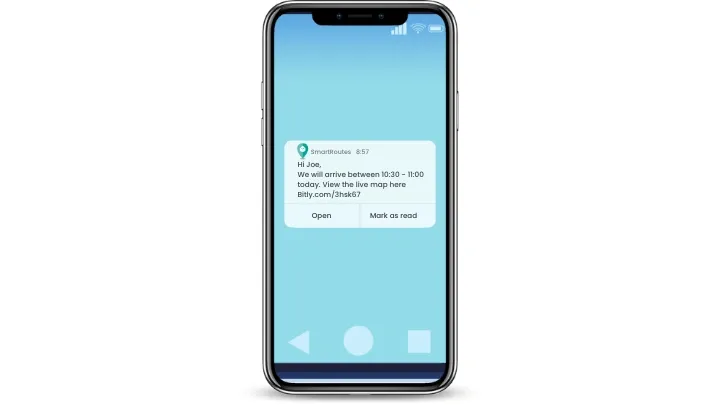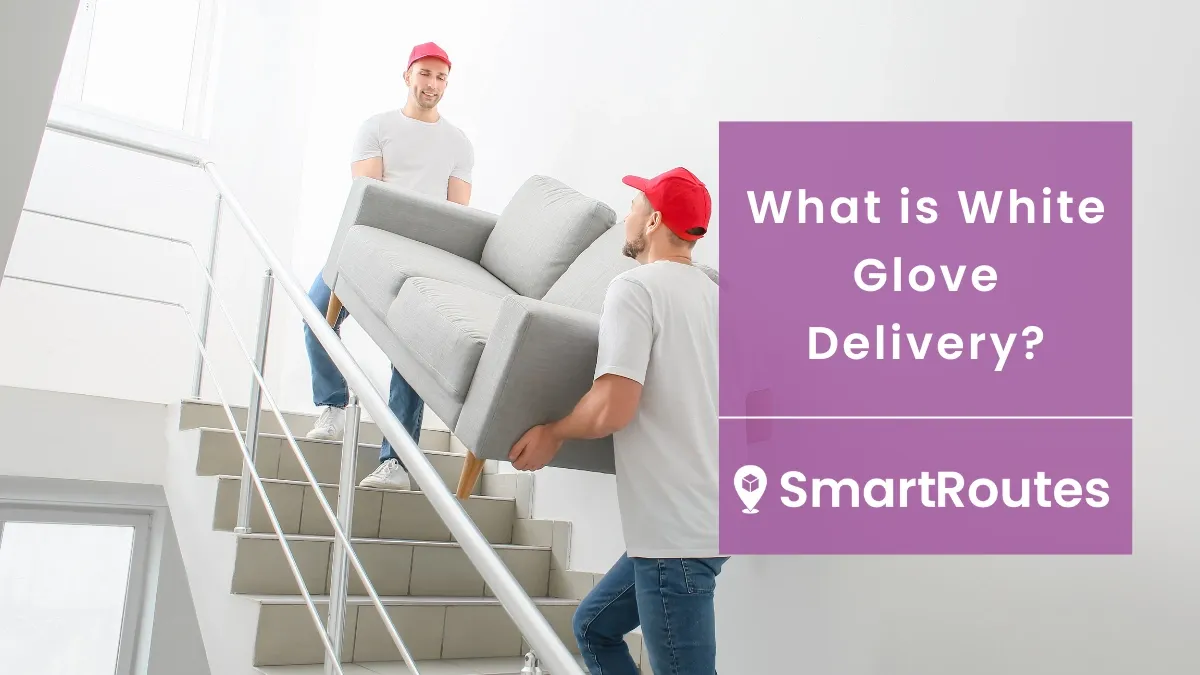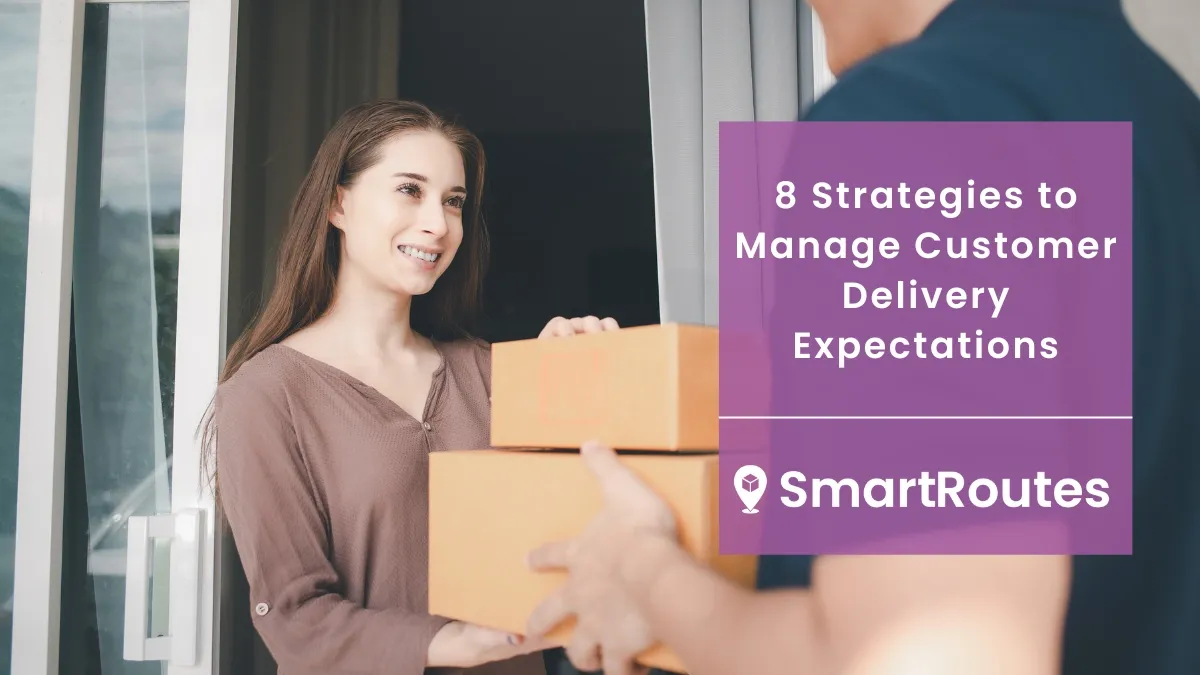The expectations of customers, when it comes to delivery services, are as diverse as the products they receive. What may seem like a simple request, such as bringing a delivery indoors, often unveils a multitude of considerations and potential complications. From insurance constraints to the need for additional assistance and the potential impact on subsequent deliveries, navigating these complexities requires a strategic approach.
Clear communication and proactive planning are essential components of a successful delivery process. By establishing expectations early and providing avenues for customers to communicate their specific requirements, businesses can mitigate potential challenges and enhance the delivery experience.
In this blog, we delve into the concept of threshold delivery, exploring its nuances and distinguishing features within the realm of modern delivery options.
What is Threshold Delivery?
Threshold delivery, a pivotal component of the last-mile logistics chain, encompasses the process by which carriers transport goods to the customer's designated delivery point, typically the doorstep or another secure, dry location, without necessitating entry into the customer's premises.
The efficacy of threshold delivery hinges on a comprehensive understanding of the intricacies inherent in the delivery location. For residences, the threshold may encompass the porch or front door, ensuring seamless accessibility for homeowners. In the case of apartment complexes or multi-unit dwellings, carriers often designate specific areas within shared spaces, thereby streamlining the delivery process while upholding security measures.
However, it is imperative to acknowledge that not all products lend themselves seamlessly to threshold delivery. Items characterized by substantial weight or elevated value, such as furniture or luxury goods, may require alternative delivery methods to ensure their safe and efficient transport.
SmartRoutes Route Planning Software
Streamline your entire delivery process, all from one platform

The Difference between Threshold Delivery and other Delivery Services
Understanding the distinctions between various options is paramount for both businesses and consumers alike. Let's take a closer look:
Standard Delivery: This foundational option represents the most basic and economical form of delivery, wherein packages are typically left at the customer's property without specific regard to environmental factors such as shelter from the elements. While convenient, this method carries an inherent risk of theft or damage, as items may be exposed to inclement weather or opportunistic individuals.
Threshold Delivery: Taking a step beyond standard delivery, threshold delivery entails a heightened level of care and consideration. Here, delivery personnel are tasked with ensuring that items are deposited in a designated dry area, such as a porch or front doorstep, mitigating the risk of exposure to adverse weather conditions. This option strikes a delicate balance between convenience and safeguarding the integrity of the delivered goods, making it particularly well-suited for moderately sized items that customers are capable of handling independently.
White Glove Delivery: At the apex of the delivery hierarchy lies white glove delivery – a premium service tailored to cater to the unique needs of high-value, bulky goods such as furniture or appliances. Distinguished by its meticulous attention to detail and commitment to exemplary customer service, white glove delivery entails delivery personnel not only transporting items into the customer's property but also offering additional services such as assembly, installation, or removal of packaging materials. While this service commands a premium fee, its comprehensive approach ensures a seamless and hassle-free experience for discerning customers seeking unparalleled convenience and professionalism.
Key Elements of Threshold Delivery
The Delivery Area
Ensuring the safe and secure placement of packages in the first available dry area stands as a cornerstone of threshold delivery.
Delivery personnel adhere strictly to this principle, recognizing the significance of preserving the integrity of the delivered goods while minimizing the risk of exposure to adverse weather conditions.
Importantly, threshold delivery protocols dictate that delivery personnel are not obligated to enter any property, thereby upholding both efficiency and security throughout the delivery process.

Level of Service
Threshold delivery encompasses a spectrum of service levels tailored to accommodate the diverse needs and preferences of customers.
At its most basic, packages are deposited in a designated secure area, such as a porch or front doorstep, without necessitating customer presence for delivery confirmation.
Alternatively, customers may opt for a higher level of service wherein their presence is required to confirm the delivery, ensuring both accountability and peace of mind.
Delivery Cost
While threshold delivery offers enhanced convenience and flexibility compared to standard delivery options, it typically commands a slightly higher price point. This reflects the added effort and attention to detail required to execute the delivery seamlessly, particularly in cases where customer presence is necessary for confirmation.
Despite this incremental cost, threshold delivery remains a cost-effective alternative to white glove delivery, offering customers a balance between affordability and convenience in their delivery experience.
Communication Channels
Transparent and effective communication channels play a pivotal role in facilitating successful threshold delivery.
Prior to the delivery date, customers are often provided with detailed information regarding the delivery process, including estimated arrival times and any specific instructions for accessing the delivery area.
Additionally, delivery personnel may utilize communication tools such as text messages or automated notifications to keep customers informed of the delivery status in real-time, fostering a sense of trust and reliability throughout the delivery experience.

Product Suitability Assessment
Threshold delivery entails a careful assessment of the suitability of products for transportation to the designated delivery area.
Delivery personnel are trained to evaluate factors such as size, weight, and fragility to determine the most appropriate method of handling and placement. Items deemed unsuitable for threshold delivery, such as exceptionally heavy or fragile goods, may require alternative delivery arrangements to ensure their safe and secure transport, underscoring the importance of product-specific considerations in the delivery process.
Customer Satisfaction Assurance
At its core, threshold delivery is driven by a commitment to customer satisfaction and convenience. As such, delivery personnel are trained to prioritize the needs and preferences of customers throughout the delivery process.
This may involve accommodating special requests, such as specific delivery time windows or additional handling instructions, to ensure a positive and personalized delivery experience.
By going above and beyond to meet customer expectations, threshold delivery services aim to cultivate long-term loyalty and trust among their clientele, solidifying their reputation as a reliable and customer-centric delivery provider.
Optimize your Threshold Delivery Routes with SmartRotues
SmartRoutes gives businesses the ability to capture proof of delivery through e-signatures or photos, provide customers with accurate estimated time of arrivals (ETAs) and live tracking links, and ultimately, enhance operational efficiency. With real-time visibility into delivery routes and statuses, businesses can proactively address any unforeseen challenges, minimize delays, and ensure timely deliveries, thereby solidifying their reputation as a reliable and customer-centric delivery provider.
SmartRoutes offers businesses the flexibility to tailor their delivery processes to suit the unique needs and preferences of their customers. Whether it's accommodating specific delivery time windows or providing additional handling instructions, businesses can leverage SmartRoutes to deliver a personalized and seamless experience that exceeds customer expectations.
With SmartRoutes, businesses can navigate the complexities of last-mile delivery with ease and confidence, delivering excellence at every step of the journey. Experience the benefits firsthand with our 7-day free trial, with no commitment required.
FAQ
1. Which service should I offer, standard delivery or threshold delivery?
The choice between standard delivery and threshold delivery depends on several factors, including the nature of the items being delivered, customer preferences, and business capabilities. Standard delivery may be more suitable for smaller, less fragile items that do not require special handling or protection from the elements. On the other hand, threshold delivery offers added convenience and security by ensuring that packages are left in a dry, secure area, making it ideal for moderately sized items or situations where customers may not be available to receive the delivery in person. Ultimately, businesses should consider the specific needs and expectations of their customers and weigh the benefits and costs of each delivery option before making a decision.
2. What types of items are typically suitable for threshold delivery?
Threshold delivery is well-suited for a wide range of items that can be safely left in a designated dry area without requiring entry into the customer's property. This includes moderately sized packages such as electronics, home goods, clothing, and non-perishable groceries. However, items that are exceptionally heavy, fragile, or high in value may require alternative delivery methods to ensure their safe transport and delivery.
3. Should customers be given the chance to leave specific instructions or special requests for threshold delivery?
Yes, providing customers with the opportunity to leave specific instructions or special requests for threshold delivery can enhance their overall delivery experience and ensure that their needs are met. Customers may have unique preferences regarding delivery times, preferred delivery locations, or additional handling instructions for their packages. By allowing customers to communicate these preferences upfront, businesses can tailor the delivery process to accommodate their individual needs and expectations, ultimately improving customer satisfaction and loyalty.
If you enjoyed this blog, you might also be interested in:





